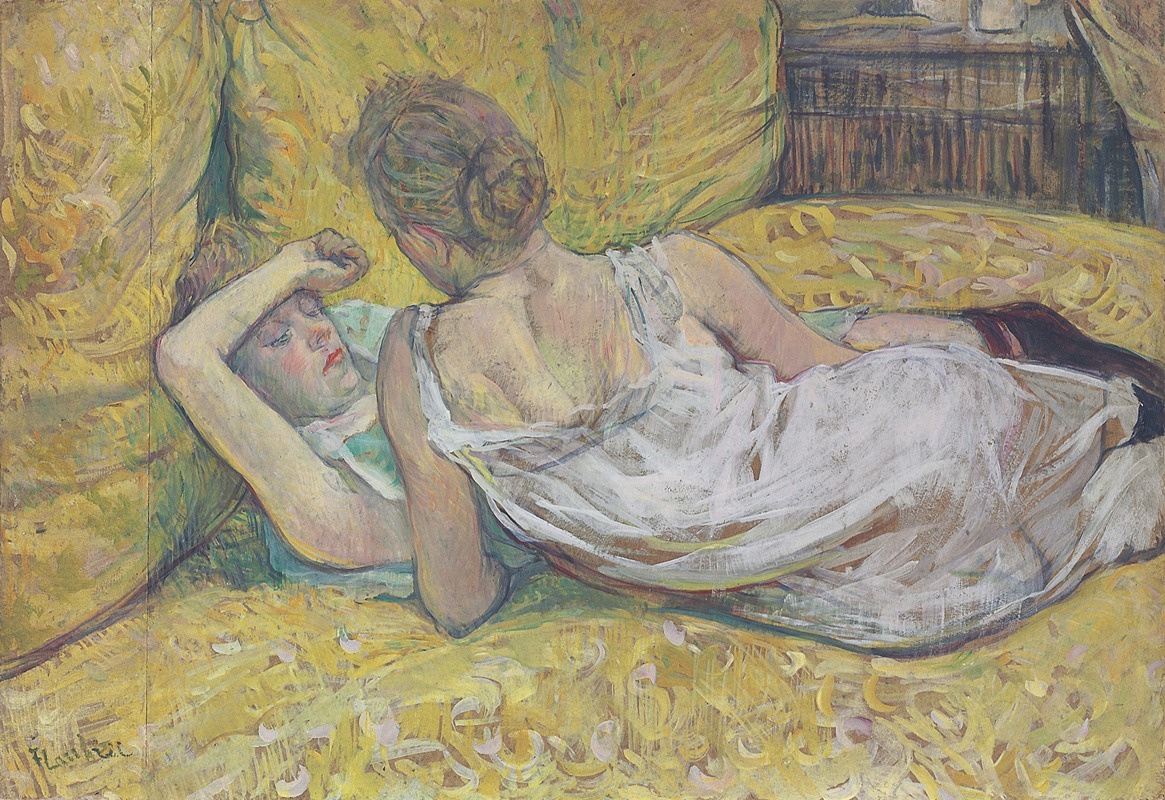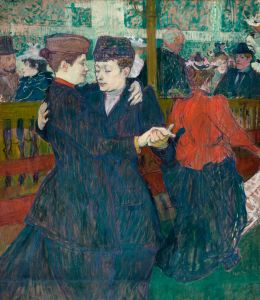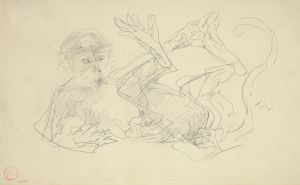
L’abandon
A hand-painted replica of Henri de Toulouse-Lautrec’s masterpiece L’abandon, meticulously crafted by professional artists to capture the true essence of the original. Each piece is created with museum-quality canvas and rare mineral pigments, carefully painted by experienced artists with delicate brushstrokes and rich, layered colors to perfectly recreate the texture of the original artwork. Unlike machine-printed reproductions, this hand-painted version brings the painting to life, infused with the artist’s emotions and skill in every stroke. Whether for personal collection or home decoration, it instantly elevates the artistic atmosphere of any space.
Henri de Toulouse-Lautrec, a prominent French painter, printmaker, draughtsman, and illustrator, is renowned for his depictions of Parisian nightlife in the late 19th century. One of his notable works is "L’abandon," which translates to "The Abandon" in English. This painting is a quintessential example of Toulouse-Lautrec's ability to capture intimate and candid moments with a unique blend of realism and impressionism.
"L’abandon" was created in 1895, during a period when Toulouse-Lautrec was deeply immersed in the bohemian culture of Montmartre, a district in Paris known for its vibrant artistic community. The painting portrays two women in a moment of tender embrace, exuding a sense of intimacy and vulnerability. This subject matter reflects Toulouse-Lautrec's fascination with the lives of women, particularly those who were often marginalized in society, such as dancers, performers, and sex workers.
The composition of "L’abandon" is characterized by its simplicity and emotional depth. Toulouse-Lautrec employs a limited color palette, dominated by soft, muted tones that enhance the painting's intimate atmosphere. The brushwork is loose and expressive, a hallmark of his style, which allows the viewer to feel the immediacy and spontaneity of the scene. The figures are rendered with a sense of realism, yet there is a subtle impressionistic quality to the way Toulouse-Lautrec captures light and shadow.
One of the most striking aspects of "L’abandon" is the way Toulouse-Lautrec conveys the emotional connection between the two women. Their bodies are intertwined, and their expressions suggest a deep sense of trust and affection. This portrayal of same-sex affection was relatively uncommon in the art of the time, and Toulouse-Lautrec's sympathetic and non-judgmental approach to his subjects is evident in this work.
Toulouse-Lautrec's ability to depict the human condition with empathy and insight is one of the reasons why his work continues to resonate with audiences today. "L’abandon" is a testament to his skill as an artist and his deep understanding of the complexities of human relationships. The painting not only captures a specific moment in time but also speaks to universal themes of love, connection, and vulnerability.
Henri de Toulouse-Lautrec's life was marked by physical challenges and personal struggles, which perhaps gave him a unique perspective on the lives of those he painted. Born into an aristocratic family in 1864, he suffered from a genetic disorder that stunted the growth of his legs, leaving him with a distinctive appearance. Despite these challenges, Toulouse-Lautrec pursued his passion for art with determination and became one of the most influential artists of his time.
"L’abandon" is housed in the Musée Toulouse-Lautrec in Albi, France, which is dedicated to the artist's life and work. The museum holds the largest collection of Toulouse-Lautrec's works, providing a comprehensive overview of his artistic achievements. Visitors to the museum can view "L’abandon" alongside other masterpieces, gaining insight into the breadth and depth of his talent.
In summary, "L’abandon" by Henri de Toulouse-Lautrec is a poignant and beautifully executed painting that captures a moment of intimate connection between two women. Through his masterful use of color, composition, and brushwork, Toulouse-Lautrec creates a work that is both emotionally resonant and artistically significant. The painting stands as a testament to his ability to portray the human experience with empathy and nuance, solidifying his legacy as one of the great artists of the 19th century.


















